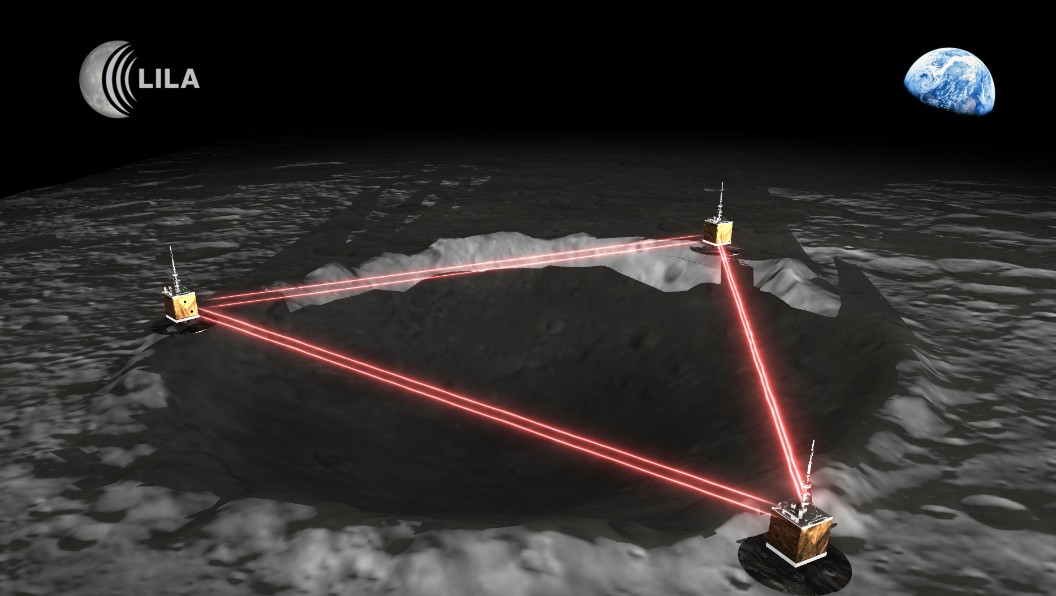Why in the News?
Scientists are planning the Laser Interferometer Lunar Antenna (LILA) Project on the Moon to bypass seismic noise, atmosphere, and frequency limits faced by Earth-based detectors like Laser Interferometer Gravitational-wave Observatory (LIGO).

What are Gravitational Waves?
- Overview: Gravitational waves are ripples in the spacetime continuum created when massive objects such as black holes or neutron stars collide.
- Speed & Effect: They travel at the speed of light, subtly stretching and compressing spacetime. On small scales, effects are extremely weak (e.g., Earth–Moon distance altered by less than an atom’s diameter).
- Prediction: Proposed by Albert Einstein (1916) in his General Theory of Relativity.
- First Detection: In 2015, LIGO recorded the first gravitational waves from two colliding black holes 1.3 billion light-years away, confirming their existence.
Detection on Earth and Challenges:
- Ground Observatories: LIGO (USA), Virgo (Italy), KAGRA (Japan), GEO600 (Germany) use laser interferometers to detect minuscule delays in light caused by waves.
- Working of LIGO: Two L-shaped detectors (Louisiana, Washington), each with 4 km arms; differences in reflections signal gravitational waves.
- Detection Range: Sensitive to events up to 7 billion light years away; frequency range ~100–1,000 Hz.
- Challenges: Seismic noise, atmosphere, and human activity mask weaker signals.
- Future Space Missions:
- LISA (Laser Interferometer Space Antenna, 2030s): Three satellites in triangular formation, sensitive to 0.1 millihertz–0.1 hertz.
- SKA (Square Kilometre Array, Australia & South Africa): Monitors pulsars for nanohertz waves.
- Decihertz Gap: Frequencies 0.1–10 Hz remain unexplored, which LILA aims to study.
About Laser Interferometer Lunar Antenna (LILA) Project
- Overview: Proposed by Vanderbilt Lunar Labs, USA, to build a gravitational-wave detector on the Moon.
- Ideal Conditions: The Moon’s polar shadow zones provide ultra-low seismic activity, natural vacuum, and no atmospheric or radio interference.
- Focus: Sub-hertz gravitational waves, vital for studying intermediate-mass black holes and the early universe.
- Phases:
- LILA Pioneer: Can be deployed within this decade using American lunar landers (Blue Origin, Intuitive Machines) and possibly India’s Chandrayaan programme.
- LILA Horizon: Advanced phase requiring astronauts for setup.
- Cosmic Symphony Analogy:
- SKA: Captures low-frequency “bass notes.”
- LIGO (and future LIGO-India): Detects high-pitched bursts from stellar collisions.
- LILA: Covers missing middle frequencies, completing the “cosmic raag.”
- Historical Note: Since Apollo, retro-reflectors on the Moon track Earth–Moon distance. Some scientists suggest the Earth–Moon system itself acts as a natural detector.
Significance:
- Scientific Advancement: Opens the decihertz frontier, inaccessible so far.
- Global Collaboration: Complements LIGO-India (IndIGO project), operational by 2030.
- Research Potential: Helps study intermediate-mass black holes, cosmic mergers, and universe origins.
- Lunar Astronomy: Marks the start of using the Moon as a laboratory for space science.
- Holistic Coverage: With LISA, SKA, and Earth detectors, LILA would map the entire gravitational-wave spectrum, giving a complete picture of the universe.
| [UPSC 2020] The experiment will employ a trio of spacecraft flying in formation in the shape of an equilateral triangle that has sides one million kilometres long, with lasers shining between the craft.” The experiment in question refers to
Options: (a) Voyager-2 (b) New Horizons (c) LISA Pathfinder (d) Evolved LISA* |
Get an IAS/IPS ranker as your 1: 1 personal mentor for UPSC 2024

